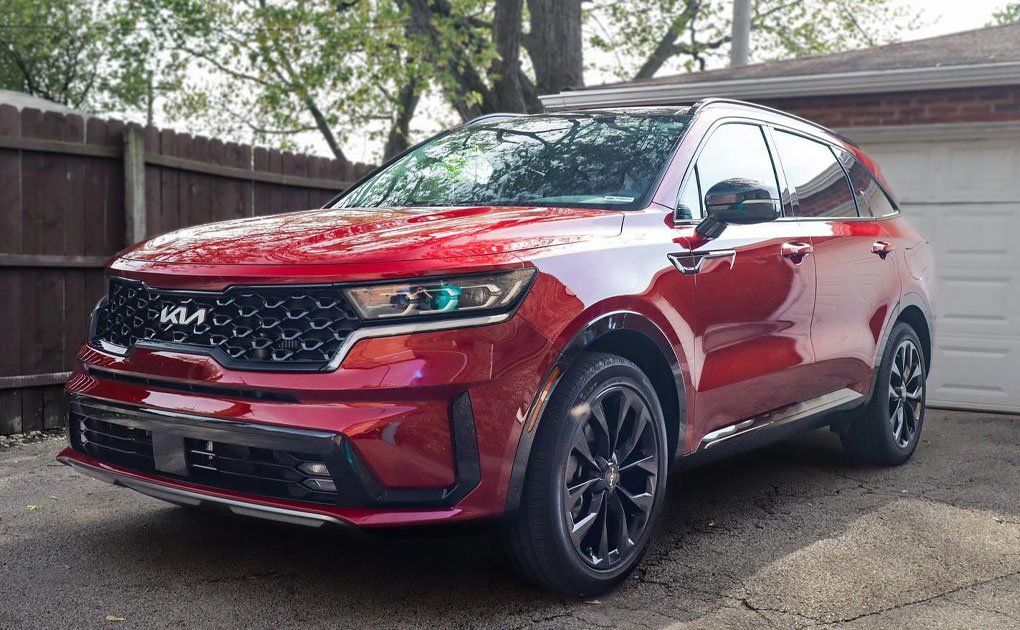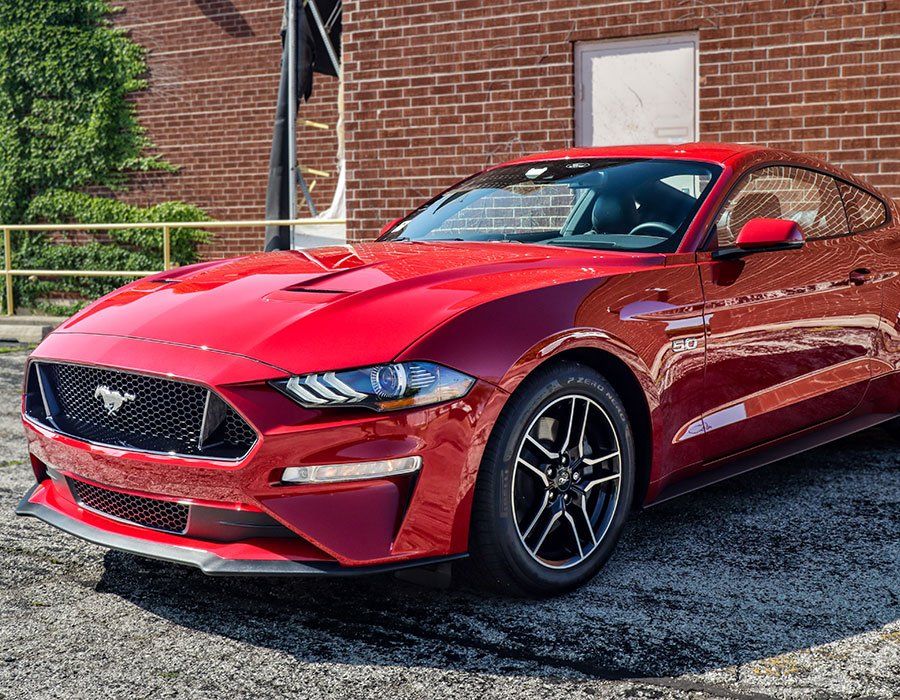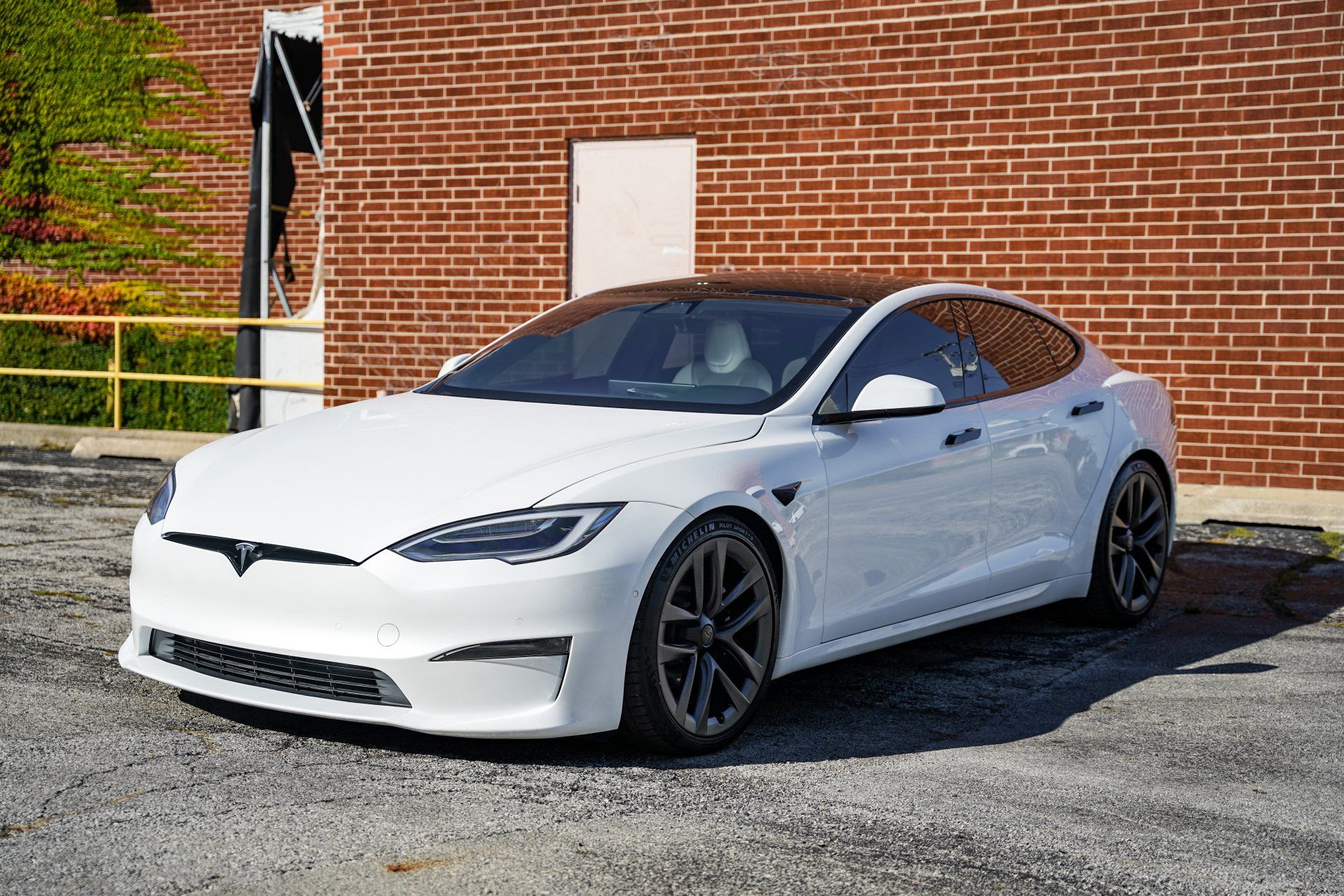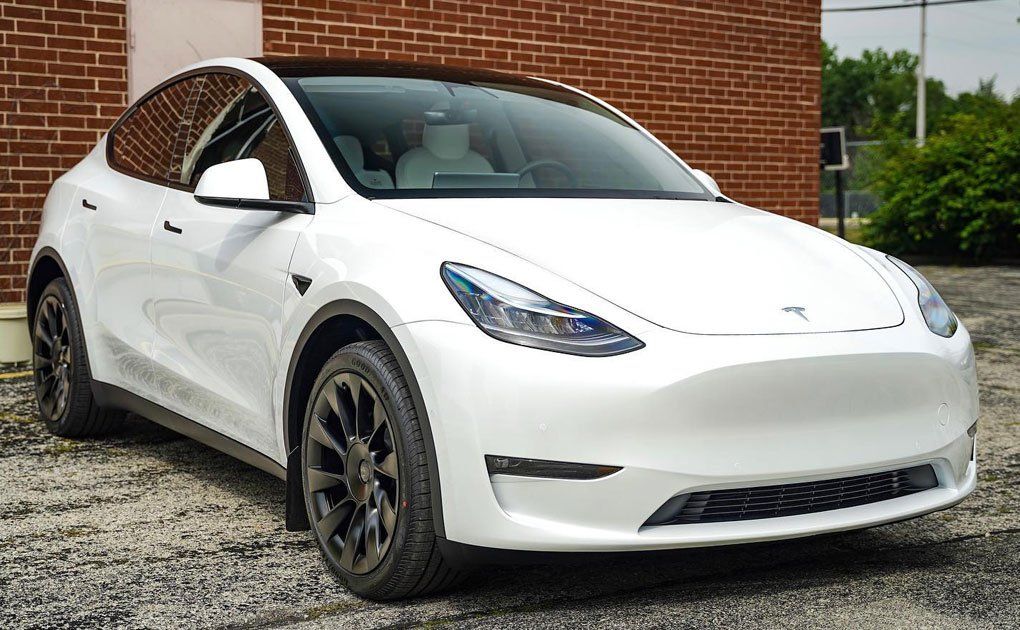Many car owners wonder how long it takes to apply paint protection film. Understanding this timing becomes essential when you aim to protect your beloved vehicle’s pristine look from everyday wear and tear. A professional paint protection film application involves several meticulous steps—from an initial inspection and thorough cleaning to precision cutting—ensuring each vehicle gets custom attention. Modern technology aids in this process, making it faster than ever before.
The application of paint protection film typically takes around 4-6 hours for the front-end installation. However, the duration may vary depending on factors such as the size and complexity of the vehicle's front end, the installer's experience, and any additional services requested. It is advisable to allocate a full day for installation to ensure proper preparation, application, and curing of the film.
The Paint Protection Film Process
The process of applying a paint protection film involves several vital steps to ensure optimal protection for your vehicle's paint. It's not just about slapping on a layer of film; it's a meticulous process that demands attention to detail and skill. Let's break it down step by step.
Step I - Initial Inspection: The journey starts with an initial inspection of your vehicle. The installer carefully examines the condition of the car, looking for any areas of damage, dirt, or imperfections that need to be addressed before the film application. This thorough assessment is critical to ensuring that the paint protection film adheres properly and achieves the desired protective effect. Addressing issues such as chips, scratches, or even minor blemishes at this stage can prevent them from becoming more significant problems over time. Moreover, the initial inspection sets the stage for a successful PPF application by addressing any pre-existing issues that could interfere with the proper adhesion and performance of the film.
Step II - Cleaning the Surface: Once the initial inspection is completed, it's time to get down to the cleaning business. The vehicle undergoes a thorough cleaning process to remove any dust, dirt, or contaminants from the surface. This cleaning step is vital because it ensures that the paint protection film adheres perfectly to the paint without trapping any imperfections beneath it. Imagine trying to apply a sticker to a dusty or greasy surface—it just won't stick properly. To put this into perspective, consider how meticulous one needs to be when applying a screen protector to a mobile phone. Even the tiniest speck of dust trapped beneath can compromise the result. The same principle applies here—cleaning ensures a seamless bond between the paint protection film and your vehicle's paint.
Step III - Film Cutting: After the surface is pristine from cleaning, it's time for precision. The paint protection film is cut to fit the specific dimensions of your vehicle. Many professionals use computer-aided design (CAD) software to achieve precise cuts, ensuring a perfect fit that aligns with every curve and contour of your vehicle's bodywork. This precise cutting minimizes the need for excessive stretching and manipulation during application, ultimately resulting in a cleaner and more professional finish. Think of this step as tailoring a bespoke suit for your vehicle—the PPF is custom-cut to match every contour and edge with precision. Just as an impeccably tailored suit fits flawlessly, custom-cut paint protection film ensures seamless coverage that complements your vehicle's aesthetics while delivering robust protection against external elements.
By meticulously attending to these crucial steps in the paint protection film application process, professionals ensure that your vehicle receives top-notch protection without compromising its visual appeal.
Preparing Your Vehicle
Before delving into applying the protective film to your vehicle, it's crucial to prepare the surface properly. This process ensures that the paint protection film adheres smoothly and effectively to the vehicle's exterior, offering optimal protection and a flawless finish. Let's dissect the essential steps involved in preparing your vehicle:
Step I - Detailed Wash: To start, a thorough and detailed wash is necessary. The vehicle undergoes a meticulous cleansing process using a mild pH-balanced shampoo. Every nook and cranny receives special attention to ensure all dirt, grime, and contaminants are completely removed. Stubborn residues, such as tree sap, bird droppings, and other persistent contaminants, are meticulously addressed during this phase. This step lays the foundation for a clean and smooth surface, allowing the paint protection film to adhere seamlessly and provide robust protection against external elements. It's like giving your vehicle a refreshing spa treatment before applying its shield.
Step II - Clay Bar Treatment: Following the detailed wash, the next crucial step involves utilizing a clay bar to eliminate any remaining surface contaminants. The clay bar treatment is instrumental in achieving a pristine surface free from embedded particles that could hinder the adhesive properties of the paint protection film. By running the clay bar across the surface, it captures and lifts stubborn contaminants that may have evaded the initial wash. This meticulous process ensures that the vehicle's exterior is impeccably clean, laying the groundwork for optimal adhesion and long-lasting protection.
Step III - Paint Correction: In some cases, minor imperfections, such as scratches or blemishes, may be present on the vehicle's paintwork. To address this, a paint correction process is employed to polish out these flaws, ensuring a flawlessly smooth appearance for the applied film. Some might question whether paint correction is truly necessary; however, consider this: A pristine surface not only enhances the aesthetic appeal but also promotes a seamless adhesion of the protective film. It's akin to priming a canvas before painting a masterpiece.
The meticulous detailing involved in these preparation steps sets the stage for an effective and durable application of the paint protection film. By investing effort and time into proper preparation, you pave the way for enhanced longevity and performance of the protective film.
Applying the Film
Turning your car into a gleaming fortress against scratches and road debris is a painstaking process that requires precision and expertise. The application of paint protection film involves several steps, each critically important in ensuring that your vehicle's exterior is safeguarded to perfection.
Step I - Positioning the Film: The pre-cut film sections are laid out on the vehicle’s surface. It's akin to putting together a puzzle, but instead, every piece needs to perfectly cover each contour, edge, and curve of your car. This meticulous process ensures comprehensive coverage, leaving no vulnerable spot exposed to potential damage.
Step II - Wet Application: Once the film sections are in place, it's time for the wet application. A slip solution, usually a mix of water and soap, is sprayed onto the film and the vehicle's surface. This liberally applied solution allows the film to glide seamlessly across the surface, enabling technicians to make precise adjustments to its positioning before it sets.
Step III - Squeegee Out Bubbles: After ensuring proper positioning, technicians use a specialized squeegee to meticulously remove any air bubbles and excess solution trapped between the film and the vehicle's surface. This thorough process guarantees a smooth, bubble-free finish that not only looks flawless but also prevents any imperfections that could compromise the effectiveness of the paint protection film.
Imagine trying to wrap a present neatly without any creases or air bubbles under the wrapping paper. Applying paint protection film requires the same level of precision and attention to detail in order to achieve an impeccable result. Every bubble or crease left behind during this step can potentially compromise the integrity of the protective layer and diminish its ability to shield your vehicle from damage. This systematic approach ensures that every inch of your vehicle is safeguarded with precision, making paint protection film an invaluable investment in preserving your vehicle's pristine appearance and long-term value.
Factors Affecting Installation Time
When applying paint protection film, several factors can influence the installation duration. Let's explore the details of each factor and assess how they impact the time needed for a successful application.
Vehicle Size and Complexity
The size and complexity of the vehicle are critical in determining the installation duration. Larger vehicles like SUVs or trucks generally require more time due to their expansive surfaces and distinct design features, demanding meticulous attention for comprehensive coverage. Vehicles with intricate designs and unconventional body shapes add an extra layer of complexity, further extending the installation duration.
Condition of the Paint
The condition of the vehicle's paintwork significantly impacts installation time. If the paint exhibits defects such as scratches or swirl marks, extended preparation may be necessary before applying the paint protection film. It's important to note that underlying flaws in the vehicle's paint can compromise the effectiveness of the film application. Addressing these issues beforehand not only contributes to a seamless installation process but also enhances the overall durability and aesthetic appeal of the protective film.
Coverage Area
The extent of coverage significantly impacts the installation time. Full-body wraps naturally demand substantial time compared to partial applications focusing on specific areas such as bumpers or hoods. The comprehensive nature of full-body installations entails meticulous handling and precise alignment throughout every stage of the application process, thereby prolonging the overall duration.
Installer Expertise
The proficiency and experience of the installer play a pivotal role in determining the installation time. Seasoned professionals efficiently navigate through the application process while upholding high standards of quality and precision, minimizing potential delays. Conversely, less experienced installers may require additional time to avoid errors or imperfect installations. While being thorough is paramount regardless of expertise level, adept professionals are skilled at swiftly addressing challenges without compromising quality.
Understanding these factors can provide valuable insights into effectively managing expectations regarding installation durations and ensuring an optimal outcome for your paint protection film application.
Curing and Drying Period
Once the paint protection film is applied to your vehicle, it enters a vital phase of drying called immediate drying, followed by an extended period of curing. This initial drying stage ensures that the film begins to adhere correctly, setting the foundation for a secure bond with the vehicle's surface. The controlled application of heat assists in kick-starting this process, but it's important not to rush it. Proper, gradual heating ensures that the film sets evenly without risking premature adhesion or distortion.
After the immediate drying, we move on to the extended curing period, which is a critical phase for the PPF to fully form a secure bond with your vehicle's paint. During this time, which typically spans between 24 and 72 hours, depending on environmental conditions, it is crucial to allow the adhesive to set completely and create a strong and durable bond with the vehicle's surface. It's essential to exercise caution during this curing phase. Avoid washing your car during this period to prevent dislodging or damaging the film as it solidifies its bond with the paint. Additionally, refrain from exposing the vehicle to rain or extreme environmental conditions that might interfere with the curing process.
Some installers may provide specific guidelines tailored to their paint protection film products or installation techniques regarding post-application care and precautions during the curing stage. Always ensure that you follow these instructions diligently to maximize the effectiveness of your PPF while protecting your vehicle. By understanding and respecting these crucial drying and curing processes, you can ensure that your paint protection film forms a resilient shield around your vehicle, providing long-lasting protection against physical damage while maintaining the luster and integrity of your car's paint.
Overall Time Estimate
When it comes to applying a paint protection film, the time required can vary based on several key factors. Let's break down the estimated time needed for different types of PPF applications and understand what contributes to the overall timeframe.
- Partial PPF Applications: When applying paint protection film to specific areas like the front-end of a vehicle, the process generally takes 2 to 4 hours. The smaller surface area and simpler logistics contribute to the shorter timeframe. For instance, wrapping just the front bumper and hood requires less time compared to a full-body application.
- Full-body wraps: On the other hand, full-body paint protection film applications can be more time-consuming, taking upwards of 8 hours to a full day. The increased coverage and complexity involved in wrapping the entire vehicle contribute to this longer timeframe.
- Overall Standard Timeframe: On average, plan for around half a day for most thorough and professional installations. Allocating a full day ensures there is enough time for proper preparation, application, and initial curing. This includes meticulous surface preparation, precise cutting and shaping of the film, professional application techniques, and allowing sufficient time for the film to cure effectively.
The size and complexity of the vehicle, the condition of the paint, and any additional customizations or modifications required can all influence the duration of the PPF application process. It's important to factor in these variables when scheduling an appointment for a paint protection film installation to ensure that adequate time is allocated for a quality application. Keep in mind that investing in professional installation by experienced technicians equipped with high-quality PPF products is crucial for achieving optimal results and long-term protection for your vehicle's paint.
Understanding these estimated timeframes provides insight into the meticulous nature of paint protection film application and emphasizes the value of allocating sufficient time for a thorough and professional installation.
Premier Paint Protection Film Service in Carol Stream, IL
If you’re seeking premier paint protection film services in Carol Stream, IL, D’Andrea Auto Detailing is your top choice. Our expert team delivers outstanding paint protection film solutions designed to shield your vehicle from scratches, chips, and environmental wear, all while maintaining its sleek appearance. With our meticulous installation and high-quality materials, we ensure that your car receives the best protection possible. Reach out to us today to find out more about how our premier PPF services can keep your vehicle in exceptional condition. Call us at (708) 574-8496 to get started!
D’Andrea Auto Detailing was founded in 2021, setting out to be part of the solution to the obstacle of achieving automotive protection and perfection in the often messy Midwest city of Carol Stream, Illinois. We provide two types of high-quality vehicle paint protection services - Undrdog Ceramic Coatings and XPEL Paint Protection Films - alongside individual interior rejuvenation and exterior decontamination services. We aim to help both top-tier sports cars and daily drivers always look their best and operate even better!
Quick Links
Hours of Operation
Monday-Friday: 8:00 AM - 5:00 PM
Saturday - Sunday: Closed
This website was designed by the team at
Detailers Roadmap, a platform developed for detailing operators across the globe.
All Rights Reserved | 8bitcreative, LLC | D’Andrea Auto Detailing





